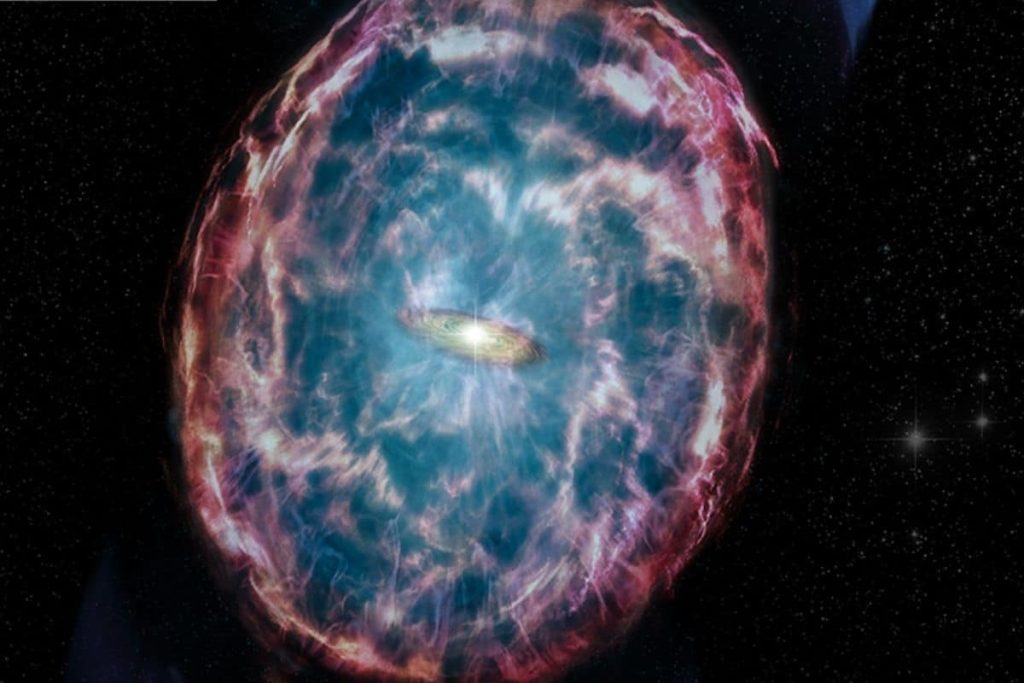But what exactly this is is still shrouded in mystery.
2017 GW170817 has been world news for a while† For the first time, researchers have detected gravitational waves generated by the merger of two neutron stars. For the first time, it was possible to investigate their effects using electromagnetic radiation (or light). Much has already been published about this event. But a new study published in the journal Astrophysical Journal Letters, reveals that nearly five years later, there’s still more to be said for GW170817. In fact, scientists think they’ve discovered something entirely new in the wake of the violent merger: a mysterious source of X-rays. This could be a kilonova’s afterglow (something that scientists have never seen) or matter falling into a black hole from merging neutron stars (which, too, has never been observed). “We are looking for something new and unusual here that we are seeing for the first time,” said researcher Abrajita Hajela. “This gives us the opportunity to observe and understand new physical processes that have not been observed before.”
kilonova
As mentioned, the study deals with the much discussed GW170817. Two neutron stars merged together, creating a kilonova (a very powerful explosion, about 1,000 times more powerful than a classical supernova). However, at the same time, a jet appeared: a concentrated, collected stream of high-energy particles. These particles blasted off at nearly the speed of light, and also generated X-rays. Initially, this X-ray radiation from Earth was not visible; The Chandra X-ray Telescope searched for it shortly after noticing gravitational waves, but to no avail. But that changed after a few days. It is therefore suspected that the merging neutron stars generated a very narrow jet that was not aimed at Earth, but over time – hitting the surrounding gas and dust, then slowing down and expanding – still entered Chandra’s field of view.
new source
In the years since, Chandra has continued to monitor GW170817. And since early 2018, the observatory has seen X-ray emissions begin to decline. The researchers say it can be traced back to the fact that the plane is doomed to keep decelerating and expanding. With this, the X-ray emission will be further reduced. But then something strange happens: As of March 2020, the decline in X-ray emissions will stop and X-ray emissions will remain stable for months in a row. That’s when astronomers realized that something special was going on. Researcher Raffaella Margotti said: “The fact that the X-rays stopped decreasing rapidly was the best evidence that there must be another source of X-rays in addition to the aircraft.” “A completely different source of X-rays is needed to explain what we’re seeing here.”
Black hole or afterglow?
But what kind of source is this? It may be the afterglow of the kilonova, the researchers say. The glow is said to be caused by a shock wave from an expanding debris cloud that arose during the violent merger of neutron stars. This shock wave heats the surrounding material, causing the emission that researchers refer to as the kilonova afterglow. Another possibility is that the extra X-rays arise because the black hole – which formed after neutron stars merge – attracts and consumes material. “This will be the first time we see a kilonova auroras, and it will also be the first time we’ll see material falling into a black hole after merging neutron stars,” said researcher Joe Bright. “Both results will be very exciting.”
future research
But which outcome is the correct one, remains shrouded in mystery at the moment. For this, GW170817 must first be studied in more detail. Astronomers certainly intend. In addition, GW170817 is observed not only in X-rays, but also in radio waves. If the additional X-rays are caused by a kilonova glare, you can expect that radio radiation will also be generated in the long term. However, if the additional X-rays were the work of a newly formed black hole, no radio emissions would be generated and the X-ray emissions would remain stable or rapidly decline.
Astronomers can’t wait to see what happens in the coming years. “Further investigation of GW170817 may have far-reaching implications,” said researcher Kate Alexander. “The discovery of the kilonova’s afterglow means that the merger did not immediately produce a new black hole.” But it is also interesting that it turns out that a black hole formed instantly while it was busy consuming material and therefore responsible for the extra X-rays. “The object will then provide astronomers with the opportunity to study how matter falls into a newborn black hole.”

“Coffee buff. Twitter fanatic. Tv practitioner. Social media advocate. Pop culture ninja.”











More Stories
“Ask at least one question in return.”
According to research, people with this sleep rhythm live longer.
13 municipalities in the province of Seville have mosquitoes carrying the Nile virus